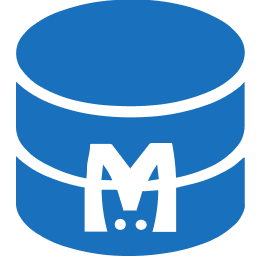New to KubeDB? Please start here.
Manage KubeDB objects using CLIs
KubeDB CLI
KubeDB comes with its own cli. It is called kubedb cli. kubedb can be used to manage any KubeDB object. kubedb cli also performs various validations to improve ux. To install KubeDB cli on your workstation, follow the steps here.
How to Create objects
kubectl create creates a database CRD object in default namespace by default. Following command will create a MySQL object as specified in mysql.yaml.
$ kubectl create -f https://github.com/kubedb/docs/raw/v2025.6.30/docs/guides/mysql/cli/yamls/mysql-demo.yaml mysql.kubedb.com/mysql-demo created You can provide namespace as a flag --namespace. Provided namespace should match with namespace specified in input file.
$ kubectl create -f https://github.com/kubedb/docs/raw/v2025.6.30/docs/guides/mysql/cli/yamls/mysql-demo.yaml --namespace=kube-system mysql.kubedb.com/mysql-demo created kubectl create command also considers stdin as input.
cat mysql-demo.yaml | kubectl create -f - How to List Objects
kubectl get command allows users to list or find any KubeDB object. To list all MySQL objects in default namespace, run the following command:
$ kubectl get mysql NAME VERSION STATUS AGE mysql-demo 9.1.0 Running 5m1s mysql-dev 5.7.44 Running 10m1s To get YAML of an object, use --output=yaml flag.
$ kubectl get mysql mysql-demo -n demo --output=yaml apiVersion: kubedb.com/v1 kind: MySQL metadata: name: mysql-demo namespace: demo spec: authSecret: name: mysql-demo-auth podTemplate: spec: containers: - name: mysql resources: limits: memory: 1Gi requests: cpu: 500m memory: 1Gi securityContext: allowPrivilegeEscalation: false capabilities: drop: - ALL runAsGroup: 999 runAsNonRoot: true runAsUser: 999 seccompProfile: type: RuntimeDefault initContainers: - name: mysql-init resources: limits: memory: 512Mi requests: cpu: 200m memory: 512Mi securityContext: allowPrivilegeEscalation: false capabilities: drop: - ALL runAsGroup: 999 runAsNonRoot: true runAsUser: 999 seccompProfile: type: RuntimeDefault serviceAccountName: mysql-demo replicas: 1 storage: accessModes: - ReadWriteOnce resources: requests: storage: 1Gi storageClassName: standard storageType: Durable deletionPolicy: Delete version: 9.1.0 To get JSON of an object, use --output=json flag.
kubectl get mysql mysql-demo --output=json To list all KubeDB objects, use following command:
$ kubectl get all -n demo -o wide NAME READY STATUS RESTARTS AGE IP NODE NOMINATED NODE READINESS GATES pod/mysql-demo-0 1/1 Running 0 2m17s 10.244.0.13 kind-control-plane <none> 1/1 NAME TYPE CLUSTER-IP EXTERNAL-IP PORT(S) AGE SELECTOR service/mysql-demo ClusterIP 10.107.205.135 <none> 3306/TCP 2m17s app.kubernetes.io/instance=mysql-demo,app.kubernetes.io/managed-by=kubedb.com,app.kubernetes.io/name=mysqls.kubedb.com service/mysql-demo-pods ClusterIP None <none> 3306/TCP 2m17s app.kubernetes.io/instance=mysql-demo,app.kubernetes.io/managed-by=kubedb.com,app.kubernetes.io/name=mysqls.kubedb.com NAME READY AGE CONTAINERS IMAGES petset.apps/mysql-demo 1/1 2m17s mysql kubedb/mysql:9.1.0 NAME TYPE VERSION AGE appbinding.appcatalog.appscode.com/mysql-demo kubedb.com/mysql 9.1.0 2m17s NAME VERSION STATUS AGE mysql.kubedb.com/mysql-demo 9.1.0 Ready 2m17s Flag --output=wide is used to print additional information.
List command supports short names for each object types. You can use it like kubectl get <short-name>. Below are the short name for KubeDB objects:
- MySQL:
my
To print only object name, run the following command:
$ kubectl get all -o name mysql/mysql-demo mysql/mysql-dev mysql/mysql-prod mysql/mysql-qa How to Describe Objects
kubectl dba describe command allows users to describe any KubeDB object. The following command will describe MySQL database mysql-demo with relevant information.
$ kubectl dba describe my -n demo Name: mysql-demo Namespace: demo CreationTimestamp: Mon, 15 Mar 2021 17:53:48 +0600 Labels: <none> Annotations: kubectl.kubernetes.io/last-applied-configuration={"apiVersion":"kubedb.com/v1","kind":"MySQL","metadata":{"annotations":{},"name":"mysql-demo","namespace":"demo"},"spec":{"storage":{"accessModes... Replicas: 1 total Status: Ready StorageType: Durable Volume: StorageClass: standard Capacity: 1Gi Access Modes: RWO Paused: false Halted: false Termination Policy: Delete PetSet: Name: mysql-demo CreationTimestamp: Mon, 15 Mar 2021 17:53:48 +0600 Labels: app.kubernetes.io/component=database app.kubernetes.io/instance=mysql-demo app.kubernetes.io/managed-by=kubedb.com app.kubernetes.io/name=mysqls.kubedb.com Annotations: <none> Replicas: 824638230984 desired | 1 total Pods Status: 1 Running / 0 Waiting / 0 Succeeded / 0 Failed Service: Name: mysql-demo Labels: app.kubernetes.io/component=database app.kubernetes.io/instance=mysql-demo app.kubernetes.io/managed-by=kubedb.com app.kubernetes.io/name=mysqls.kubedb.com Annotations: <none> Type: ClusterIP IP: 10.107.205.135 Port: primary 3306/TCP TargetPort: db/TCP Endpoints: 10.244.0.13:3306 Service: Name: mysql-demo-pods Labels: app.kubernetes.io/component=database app.kubernetes.io/instance=mysql-demo app.kubernetes.io/managed-by=kubedb.com app.kubernetes.io/name=mysqls.kubedb.com Annotations: <none> Type: ClusterIP IP: None Port: db 3306/TCP TargetPort: db/TCP Endpoints: 10.244.0.13:3306 Auth Secret: Name: mysql-demo-auth Labels: app.kubernetes.io/component=database app.kubernetes.io/instance=mysql-demo app.kubernetes.io/managed-by=kubedb.com app.kubernetes.io/name=mysqls.kubedb.com Annotations: <none> Type: kubernetes.io/basic-auth Data: password: 16 bytes username: 4 bytes AppBinding: Metadata: Annotations: kubectl.kubernetes.io/last-applied-configuration: {"apiVersion":"kubedb.com/v1","kind":"MySQL","metadata":{"annotations":{},"name":"mysql-demo","namespace":"demo"},"spec":{"storage":{"accessModes":["ReadWriteOnce"],"resources":{"requests":{"storage":"1Gi"}},"storageClassName":"standard"},"version":"9.1.0"}} Creation Timestamp: 2021-03-15T11:53:48Z Labels: app.kubernetes.io/component: database app.kubernetes.io/instance: mysql-demo app.kubernetes.io/managed-by: kubedb.com app.kubernetes.io/name: mysqls.kubedb.com Name: mysql-demo Namespace: demo Spec: Client Config: Service: Name: mysql-demo Path: / Port: 3306 Scheme: mysql URL: tcp(mysql-demo:3306)/ Parameters: API Version: appcatalog.appscode.com/v1alpha1 Kind: StashAddon Stash: Addon: Backup Task: Name: mysql-backup-9.1.0 Restore Task: Name: mysql-restore-9.1.0 Secret: Name: mysql-demo-auth Type: kubedb.com/mysql Version: 9.1.0 Events: Type Reason Age From Message ---- ------ ---- ---- ------- Normal Successful 5m KubeDB Operator Successfully created governing service Normal Successful 5m KubeDB Operator Successfully created service for primary/standalone Normal Successful 5m KubeDB Operator Successfully created database auth secret Normal Successful 5m KubeDB Operator Successfully created PetSet kubectl dba describe command provides following basic information about a MySQL database.
- PetSet
- Storage (Persistent Volume)
- Service
- Secret (If available)
- Monitoring system (If available)
To hide events on KubeDB object, use flag --show-events=false
To describe all MySQL objects in default namespace, use following command
kubectl dba describe my To describe all MySQL objects from every namespace, provide --all-namespaces flag.
kubectl dba describe my --all-namespaces To describe all KubeDB objects from every namespace, use the following command:
kubectl dba describe all --all-namespaces You can also describe KubeDB objects with matching labels. The following command will describe all MySQL objects with specified labels from every namespace.
kubectl dba describe my --all-namespaces --selector='group=dev' To learn about various options of describe command, please visit here.
How to Edit Objects
kubectl edit command allows users to directly edit any KubeDB object. It will open the editor defined by KUBEDB_EDITOR, or EDITOR environment variables, or fall back to nano.
Lets edit an existing running MySQL object to setup database Halted. The following command will open MySQL mysql-demo in editor.
$ kubectl edit my -n demo mysql-quickstart spec: .... authSecret: name: mysql-quickstart-auth # add database halted = true to delete PetSet services and database other resources halted: true .... mysql.kubedb.com/mysql-quickstart edited Edit Restrictions
Various fields of a KubeDB object can’t be edited using edit command. The following fields are restricted from updates for all KubeDB objects:
- apiVersion
- kind
- metadata.name
- metadata.namespace
If PetSets exists for a MySQL database, following fields can’t be modified as well.
- spec.authSecret
- spec.init
- spec.storageType
- spec.storage
- spec.podTemplate.spec.nodeSelector
For DormantDatabase, spec.origin can’t be edited using kubectl edit
How to Delete Objects
kubectl delete command will delete an object in default namespace by default unless namespace is provided. The following command will delete a MySQL mysql-dev in default namespace
$ kubectl delete mysql mysql-dev mysql.kubedb.com "mysql-dev" deleted You can also use YAML files to delete objects. The following command will delete a mysql using the type and name specified in mysql.yaml.
$ kubectl delete -f mysql-demo.yaml mysql.kubedb.com "mysql-dev" deleted kubectl delete command also takes input from stdin.
cat mysql-demo.yaml | kubectl delete -f - To delete database with matching labels, use --selector flag. The following command will delete mysql with label mysql.app.kubernetes.io/instance=mysql-demo.
kubectl delete mysql -l mysql.app.kubernetes.io/instance=mysql-demo Using Kubectl
You can use Kubectl with KubeDB objects like any other CRDs. Below are some common examples of using Kubectl with KubeDB objects.
# Create objects $ kubectl create -f # List objects $ kubectl get mysql $ kubectl get mysql.kubedb.com # Delete objects $ kubectl delete mysql <name> Next Steps
- Learn how to use KubeDB to run a MySQL database here.
- Want to hack on KubeDB? Check our contribution guidelines.






























